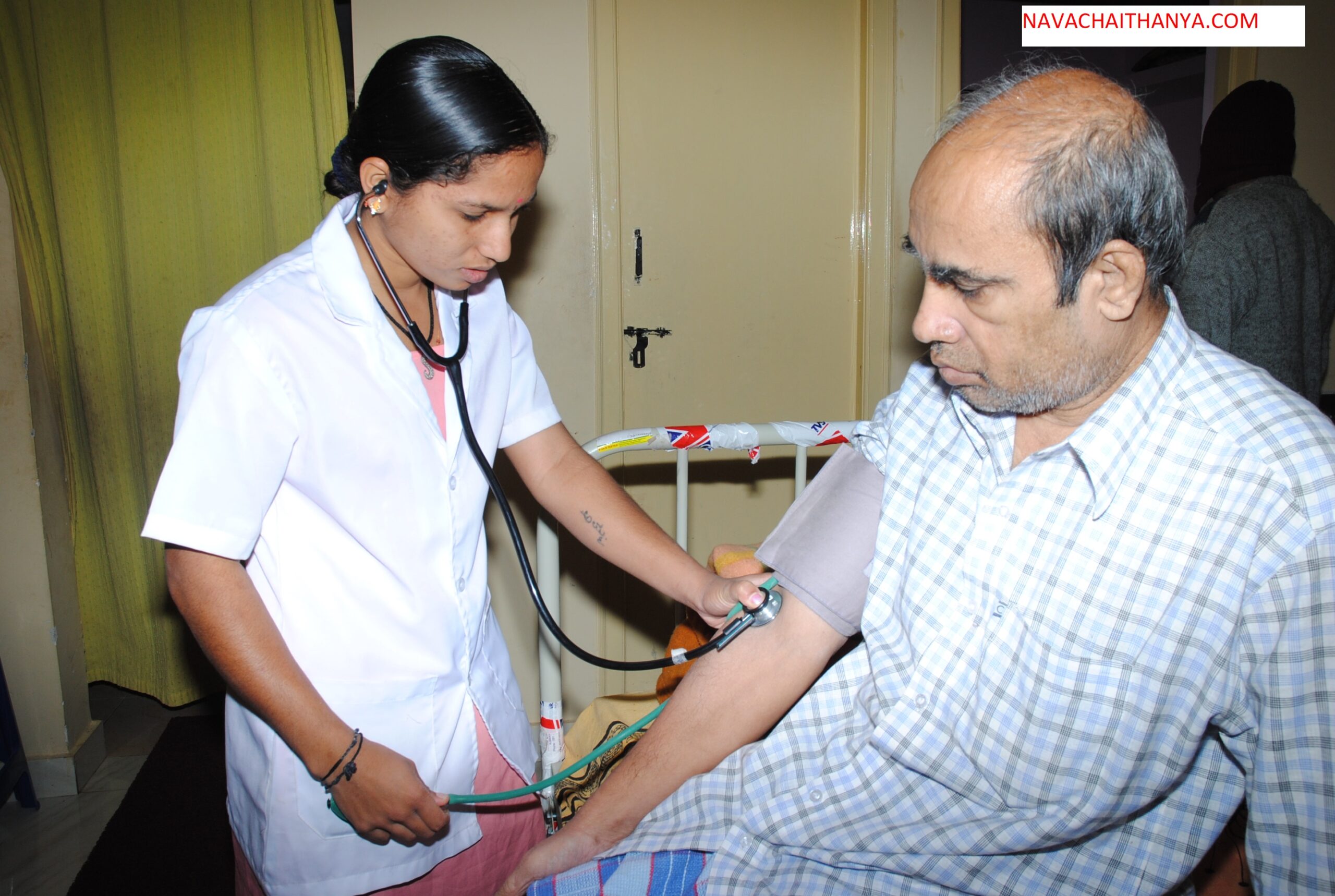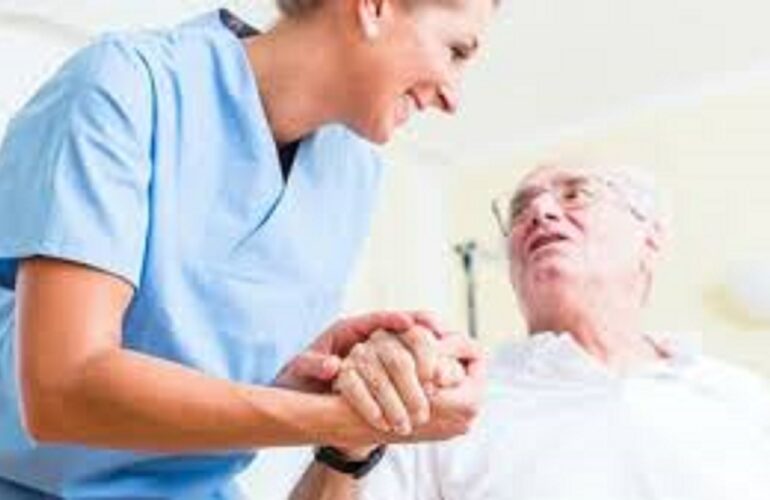Nisarga Care is a stroke rehabilitation center in Bangalore with class stroke treatment facilities
Nisarga is the Best for Stroke Treatment in Bangalore
Best Doctors for Stroke Treatment in Bangalore
Stroke Rehabilitation Care Center & Recovery Program .
Depending on the type, severity and location, strokes can have multiple effects on individuals.
Nisarga care Care we provide food accommodation Nurse , Doctors, Caretakers Housekeeping attendant service Stroke care, Post operative care, Operative care, care for elder, you can avail the service
Stroke Rehabilitation Center in Bangalore
stroke-rehabilitation-center
STROKE REHABILITATION CENTER IN BANGALORE Nisarga Care provides the right mixture of care and supervision for the rehabilitation of patients suffering …
Aspiration Pneumonia After Stroke
Pneumonia causes the highest attributable mortality of all medical complications following stroke. Respiratory failure from stroke leads to intubation
Bangalore Stroke care at Nisarga care
NISARGA CARE Healthcare is India’s leading provider of world class healthcare services.
Pneumonia lung inflammation caused by bacterial or viral infection, in which the air sacs fill with pus and may become solid. Inflammation may affect both lungs ( double pneumonia ) or only one ( single pneumonia ). WE have care facility for Pneumonia
Pneumonia is an infection that inflames the air sacs in one or both lungs. The air sacs may fill with fluid or pus (purulent material), we call Specilise Doctor
Pneumonia is inflammation and fluid in your lungs caused by a bacterial, viral or fungal infection. It makes it difficult to breathe
Pneumonia is an infection that inflames your lungs’ air sacs (alveoli). The air sacs may fill up with fluid or pus, causing symptoms
Pneumonia is an inflammatory condition of the lung primarily affecting the small air sacs known as alveoli.
Pneumonia is an infection in one or both of the lungs. It causes the air sacs of the lungs to fill up with fluid or pus.
You may develop sudden numbness, weakness or paralysis in the face, arm or leg. This often affects just one side of the body. Try to raise both your arms over your head at the same time. If one arm begins to fall, you may be having a stroke.
Understanding Paralytic Stroke
.
Paralytic Stroke occurs when the blood supply to the brain is interrupted or reduced to a large extent, depriving brain tissues of essential oxygen \
Stroke (Cerebral Vascular Accident (CVA) and Spinal Stroke)
Paralysis is a common outcome of stroke, often on one side of the body (hemiplegia). Paralysis may affect only the face, an arm or a leg, but most often,
The cause of stroke paralysis is a disruption in the transmission of neural impulses between the brain and the muscles.
Paralytic Stroke is a catastrophe. It leads to loss of many bodily abilities. These abilities could include difficulties in speech, movement
Paralytic stroke is a fairly common problem in the elderly population. Its mortality is low but it leaves devastating effects on the …
A Neurosurgeon’s Guide to Stroke Symptoms, Treatment
Common temporary symptoms include difficulty speaking or understanding others, loss or blurring of vision in one eye and loss of strength or numbness in an arm
Common causes of paralysis include strokes, spinal cord injuries and nerve disorders like multiple sclerosis. Bell’s palsy causes temporary .
A stroke is a medical condition in which poor blood flow to the brain causes cell death. … Those who experience a stroke are at risk of paralysis
Nisarga Care referred As Good care
Natural recovery
During the first three months after a stroke, a patient may experience ph
A phenomenon known as spontaneous recovery – the sudden return of a skill or ability lost to a stroke as the brain finds new ways to perform functions well.
Health conditions and diseases Stroke
Our physical therapist will help to walk with the help of support bars.
Stroke Recovery Timeline
Restoring as close as possible to or developing remedial strategies to work around functional impairment. An example of a good care coping strategy is learning to hold a toothpaste tube so that a strong hand can twist the cap.
Some patients experience setbacks in the months after a good care stroke, such as pneumonia, heart attack or second stroke. These challenges can have significant physical, psychological and emotional consequences and may delay rehabilitation.
Exploring new treatments
While physical, occupational, and speech therapies remain important components of stroke rehabilitation, researchers are always coming up with new methods to augment or supplement these therapies. An innovative technique is non-invasive brain stimulation (NIBS), which uses weak electrical currents to stimulate areas of the brain associated with good care for specific tasks such as movement . This stimulation helps to enhance the effects of the treatment. Another new treatment for spasticity and muscle stiffness that does not cause muscle weakness is using an injectable enzyme. In addition, technology-assisted rehabilitation can extend rehabilitation by targeting specific actions or processes in an engaging manner.
After six months, improvements are possible but much slower. Most stroke patients reach a relatively stable state at this stage. For some it means full recovery. good care Others have ongoing impairments, also known as chronic stroke disease. Whether full recovery is possible depends on a variety of factors, including the severity of the stroke, how quickly early treatment is provided, and the type and intensity of rehabilitation.
Even if recovery is slow, it’s still important to continue to follow up with members of your care team, including:
Your primary care physician can help you manage any health concerns outside of stroke recovery, as well as take steps to prevent future strokes.
A rehabilitation doctor (physiologist), who helps coordinate aspects of your recovery and can meet with you for as long as you need support, whether it’s for a few years or for the rest of your life.
Physical, occupational, and speech therapists can help you recover as much function as possible in daily activities while focusing on your personal goals.
A neurologist who understands the mechanisms behind stroke-related brain injury and can prescribe customized treatments to target the affected area of the brain.
A rehabilitation psychologist can assist with cognitive, emotional and behavioral good functioning as well as reintegration into the community, which aids recovery.
“During checkups, I look to support patients in any way I can,” says physiatrist Raghavan. “If there’s any way I can help them improve communication skills, return to work, improve sleep patterns, build muscle tone, reduce the risk of falls, or address psychological needs with good care, we’ll create a plan.”
1-3 months post-stroke
“The first three months after a stroke are the most important for recovery and when patients see the most improvement,” . During this time, most patients enter and complete an inpatient rehabilitation program or progress through their outpatient treatment sessions.
The goal of rehabilitation is pre stroke levels of function
Rehabilitation for stroke , Neurological rehabilitation
Hemorrhagic stroke and facial paralysis: Maggie’s story
Rehabilitation for stroke
No Image Available Neurological Rehabilitation
Neurological rehabilitation
Treatments for conditions and diseases, good care tests and treatments Wellness and preventive care
A concerted effort among experts will facilitate progress in the months and years to come. While improvement may take longer for some patients, small improvements are still warranted in good care. “I think it’s important to paint a picture of hope in stroke,” says Raghavan. “Every time you need less help with a task, that’s a milestone for the patient.”
Be quick to spot a stroke
A stroke is always an emergency. An easy way to quickly identify stroke symptoms is the acronym FAST:
Face. If a person tries to smile, is it good care to smile on one side or both sides?
weapon. Can both arms be raised evenly or does good care move one downward?
Speech. Does the person have trouble speaking or is he slurring his words?
A stroke is an emergency, and the sooner you get treatment, the better. But what happens in the days, weeks and months after a stroke? “Sometimes, the process is slow and uncertain, and different people can recover in different ways,” explains Preeti Raghavan, M.D., a Johns Hopkins stroke rehabilitation specialist.
Although recovery looks different for everyone, it can be helpful to get a sense of the stroke recovery good care timeline so you know what to expect after you or a loved one experiences a stroke.
Identifying strokes is not always easy. Look for these signs.
Day 1: Initial treatment
If you have suffered a stroke, you may initially be admitted to the emergency department to stabilize your condition and determine the type of stroke. If it’s caused by a blood clot (ischemic stroke), clot-busting medicine can help reduce the long-term effects if you treat it in time.
Depending on the severity of the stroke, you may need to spend time in intensive care or intensive care.
“Starting rehabilitation as soon as possible after considering the cause of the stroke is essential in stroke recovery,” says Raghavan. ” Nisarga care, rehabilitation begins about 24 hours after a stroke.”
The rehabilitation team includes physiotherapists, neurologists, physical and occupational therapists, speech-language pathologists and nurses. They meet daily to discuss the patient’s condition and some form of treatment is given every hour for the first day or two.
The first few weeks after a stroke
The typical hospital stay after a stroke is five to seven days. During this time, the stroke care team evaluates the effects of the stroke, which determines a rehabilitation plan.
The long-term effects of a stroke – which vary from person to person depending on the severity of the stroke and the area of the brain affected – can include:
Good care for cognitive symptoms such as memory problems and speech difficulties
Physical symptoms such as weakness, paralysis and difficulty swallowing
Emotional symptoms such as depression and impulsiveness
Extreme fatigue and trouble sleeping
Physical and occupational therapy can help determine which areas of the brain are affected by working with the patient to complete various tasks, such as walking or brushing hair. Speech-Language Therapy is important for patients who have difficulty swallowing due to stroke or windpipe effect.
Therapy sessions are conducted six times each day while the patient is in the hospital to help assess the damage caused by the stroke and begin recovery.
Stroke rehabilitation priorities
Activities of daily living (ADL) are central to rehabilitation after stroke. ADL usually include tasks such as bathing or preparing food. But you should talk to your care team about activities that are important to you, such as maintaining a work-related skill or hobby, to help set your recovery goals. While therapy is essential, practicing on your own is just as important.
In addition to affecting ADL, stroke can have serious cognitive and emotional consequences for patients and caregivers. Rehabilitation psychologists and neuropsychologists can examine these types of challenges and create a plan to improve cognitive function and develop resilience in the face of permanent lifestyle changes.
Leaving hospital after stroke
Your care team will develop a discharge plan that depends on your level of functional impairment. After a hospital stay, you can continue your rehabilitation by:
In an inpatient rehab unit or independent rehab facility, if you can benefit from physician supervision and tolerate three hours of therapy per day
In a subacute rehab facility, if you need a slower rehab course with one to two hours of therapy each day
At home with outpatient rehabilitation clinic visits as needed
“You don’t have to be 100% healthy to go home after a stroke,” says Raghavan of good care. “If you can perform most of your daily activities in your home environment and/or you have family support to help with these activities, you can go home.”




